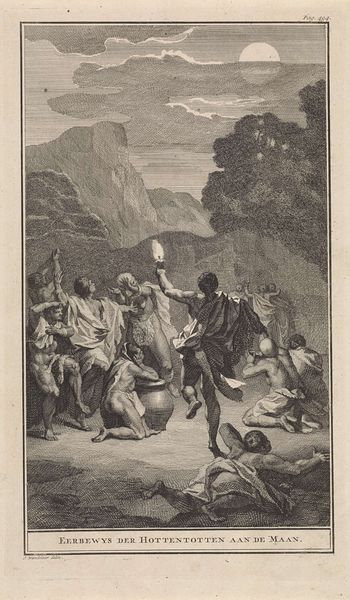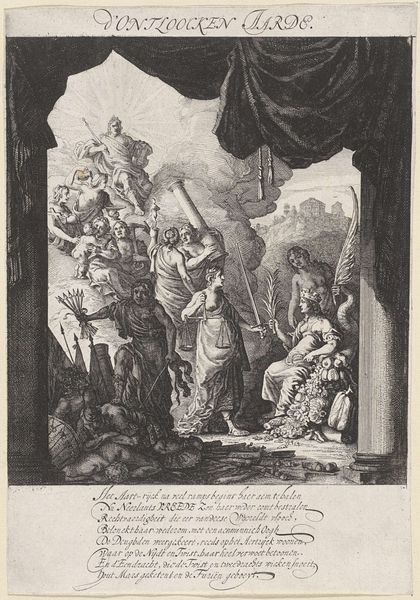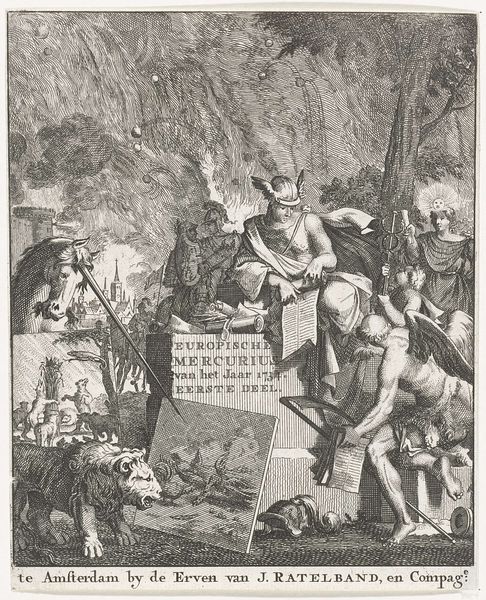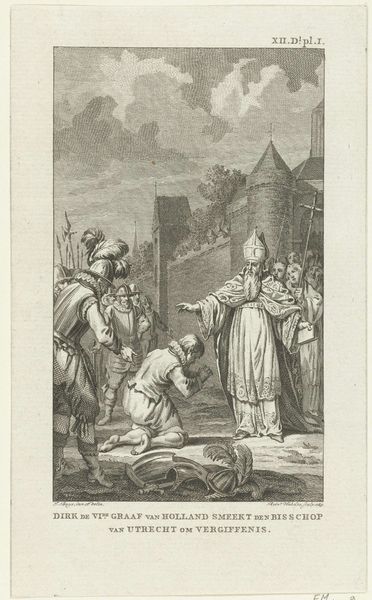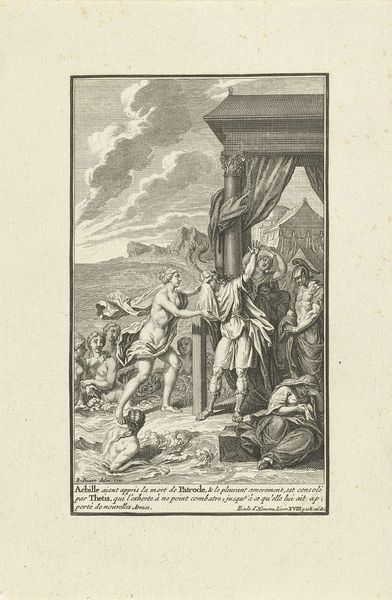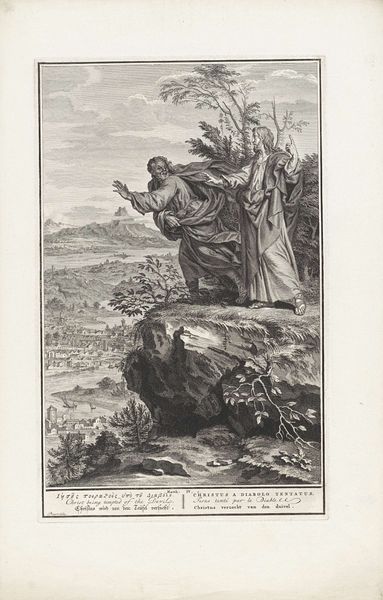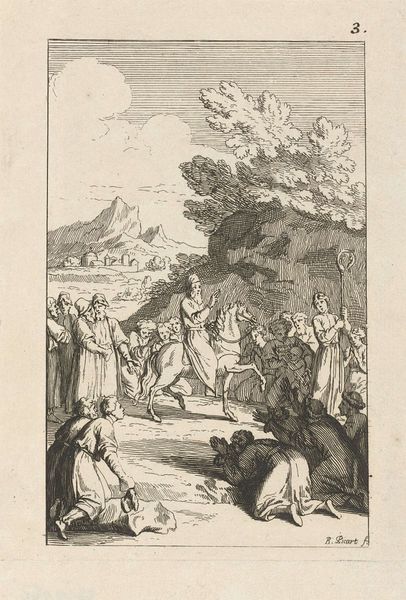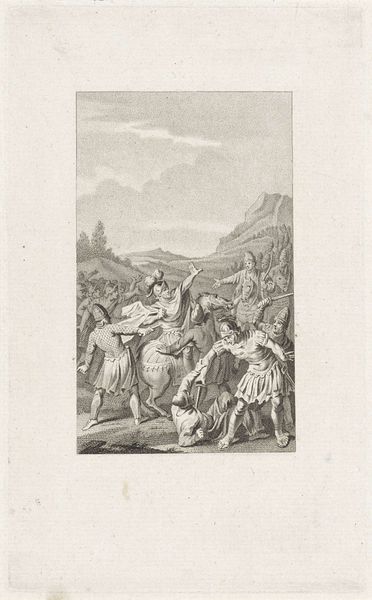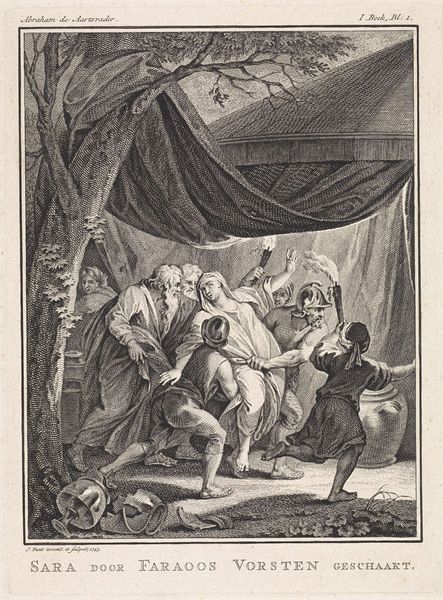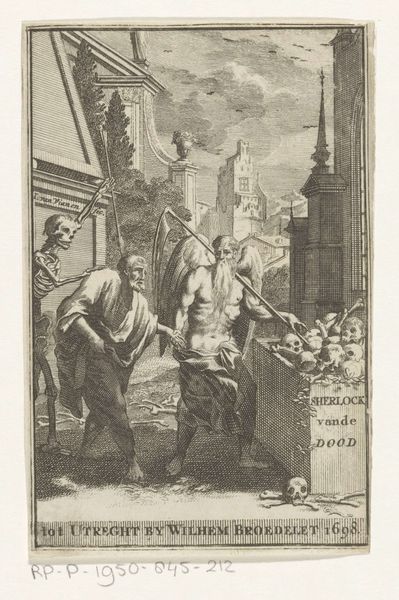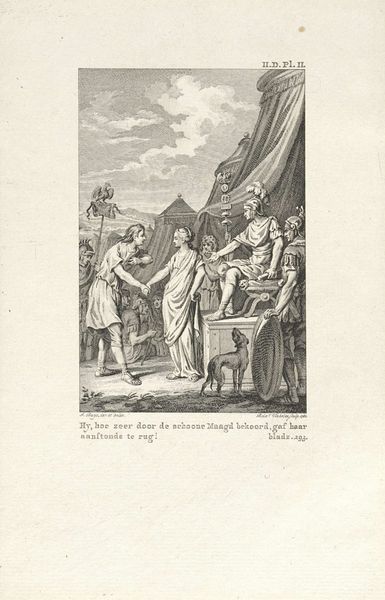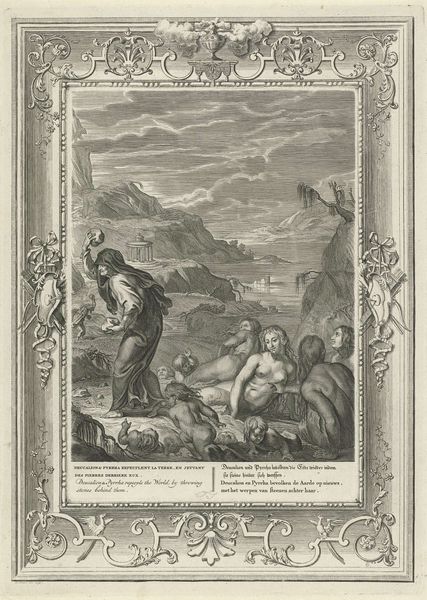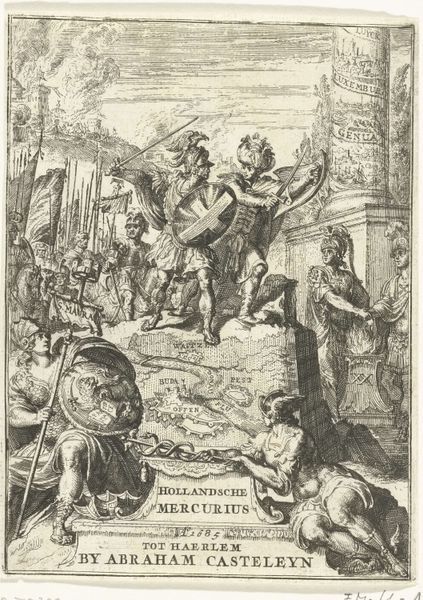
print, engraving
#
allegory
#
baroque
# print
#
old engraving style
#
traditional media
#
landscape
#
figuration
#
archive photography
#
old-timey
#
line
#
history-painting
#
engraving
Dimensions: height 174 mm, width 106 mm
Copyright: Rijks Museum: Open Domain
Curator: At first glance, I’m struck by how idealized everything is. The landscape is imposing yet picturesque, the figures are graceful, and there's this pervading sense of harmony, even if it feels a bit… distant. Editor: Let's delve into this more specifically; this engraving by Jan Caspar Philips, made around 1760, presents an Allegory of Freedom and Good Governance. The print is currently held at the Rijksmuseum. Note the prominence of classically styled figures placed within a seemingly Swiss-Italian landscape backdrop. Curator: Those idealized figures immediately caught my eye, suggesting virtues embodied within female forms. The landscape acts as a symbol of location, yes? But how do we tie these together conceptually? I sense there’s a very particular socio-political message being put forth here. Editor: Indeed. The central female figure is quite possibly an allegory for Governance, maybe even Justice, and she offers her patronage to Italy. The inscription lists locations from Switzerland to northern Italy including Milan, Parma, and Venice. She extends protection through this alignment. The figure with the spear likely suggests vigilance. We should note the presence of 'putti' and other mythic iconography at her feet representing commerce and artistic creation. Curator: I find this blending of Italian geography with allegorical personification rather fascinating from a symbolic standpoint. It suggests that principles of Good Governance and freedom weren't necessarily seen as intrinsic but, rather, as almost a beneficent force brought into a specific region. Is there also the subtext of linking these states together for increased strength, especially concerning contemporary external politics? Editor: I believe you are correct to see this visual treaty. By invoking idealized types—Justice or Freedom— linked with powerful city-states, we understand what governance should embody. In its distribution, the work shapes contemporary political thought in subtle but critical ways. The work's intended audience shapes, of course, its interpretation; for an elite citizen with some knowledge, this symbolic link between free states would present a strong endorsement. Curator: Knowing this piece is held by the Rijksmuseum also sheds some light. Its presence there underscores a Dutch connection, perhaps acting as a silent commentary on the importance of freedom within the context of Dutch history and national identity as well. It has been a pleasure delving into the print's implications. Editor: Agreed. These seemingly simple prints can really unpack profound political messages embedded within our social consciousness.
Comments
No comments
Be the first to comment and join the conversation on the ultimate creative platform.
